When it comes to EV charging, the debate between fast and slow charging is more than just a question of time. It’s about balancing convenience, cost, and the longevity of your battery.
Fast charging can be a game-changer when you’re pressed for time, but does it come with trade-offs? On the other hand, slow charging might be easier on your wallet and battery health, but is it practical for your daily routine?
In this guide, we’ll explore what fast vs slow EV charging truly delivers the best experience for electric vehicle owners.
Major Difference Between Fast and Slow Charging in EVs
There are two types of electrical currents used to charge electric vehicles (EVs): alternating current (AC) and direct current (DC). You might recall from physics class that there’s been a longstanding debate about the advantages of each type.
First off, EV batteries can only accept DC energy.
Home chargers typically use alternating current and connect to a standard 120-volt outlet (Level 1) or a dedicated 240-volt circuit (Level 2). Before charging the battery, the AC must pass through an internal converter to be compatible with the DC battery.

Due to the lower voltage and the need for current conversion, charging with AC takes longer. This is why AC chargers are often referred to as “slow chargers.”
For instance, using a Level 2 home charger can take around 11 hours to fully charge an EV from 10 percent. A Level 1 charger may require a day or more.
Related: AC vs DC Charging in Electric Vehicles
In contrast, fast charging stations, or Level 3 chargers, have a built-in converter, allowing them to supply DC energy directly to the battery. These chargers operate at much higher voltages (up to 480 volts). This eliminates the need for internal conversion and resulting in a significantly faster charge.
Most rapid charging stations can charge an EV to 80 percent in under an hour.
So if this the case, it must mean that DC chargers are better. But that’s not the case entirely.
How Fast EV Charging May Harm Your Battery
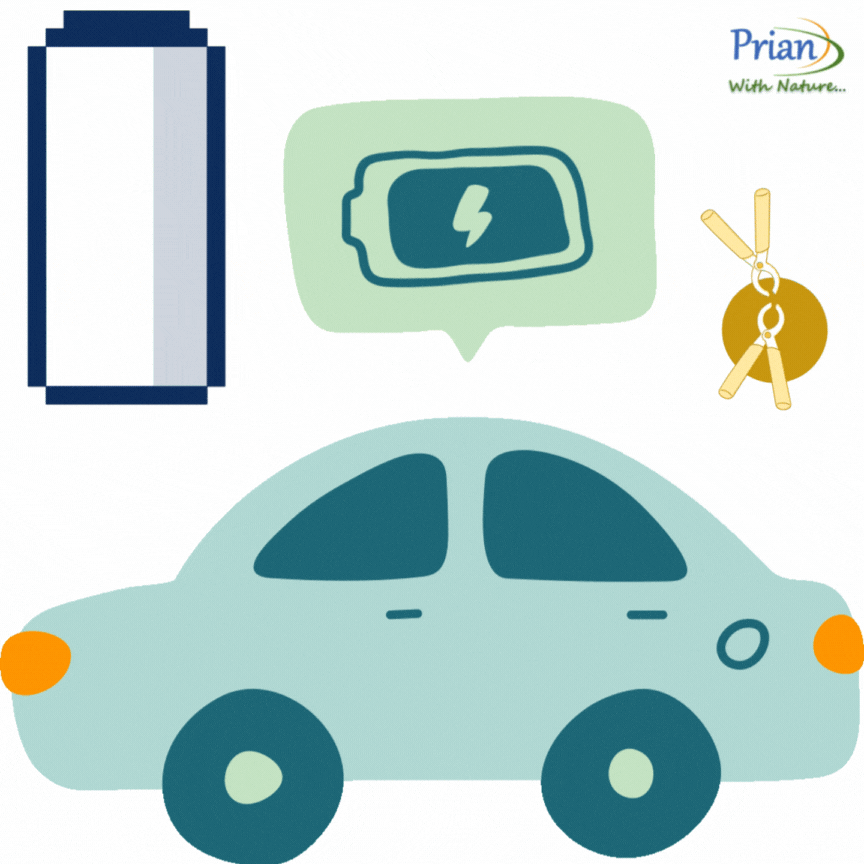
Fast charging your EV is incredibly convenient when you’re in a hurry, but it can have some downsides, particularly for your battery’s long-term health.
Lithium-ion batteries work by moving lithium ions between the anode and cathode during charging and discharging. When you use a fast charger, a lot of energy is pushed into the battery very quickly. This forces the lithium ions to move much faster than they would during slower charging.
This rapid movement generates heat. And that’s where problems can start.
Too much heat can cause the battery’s internal components to degrade, especially the electrolyte. It is the substance that helps the ions move. As the electrolyte breaks down over time, the battery becomes less efficient and holds less charge.
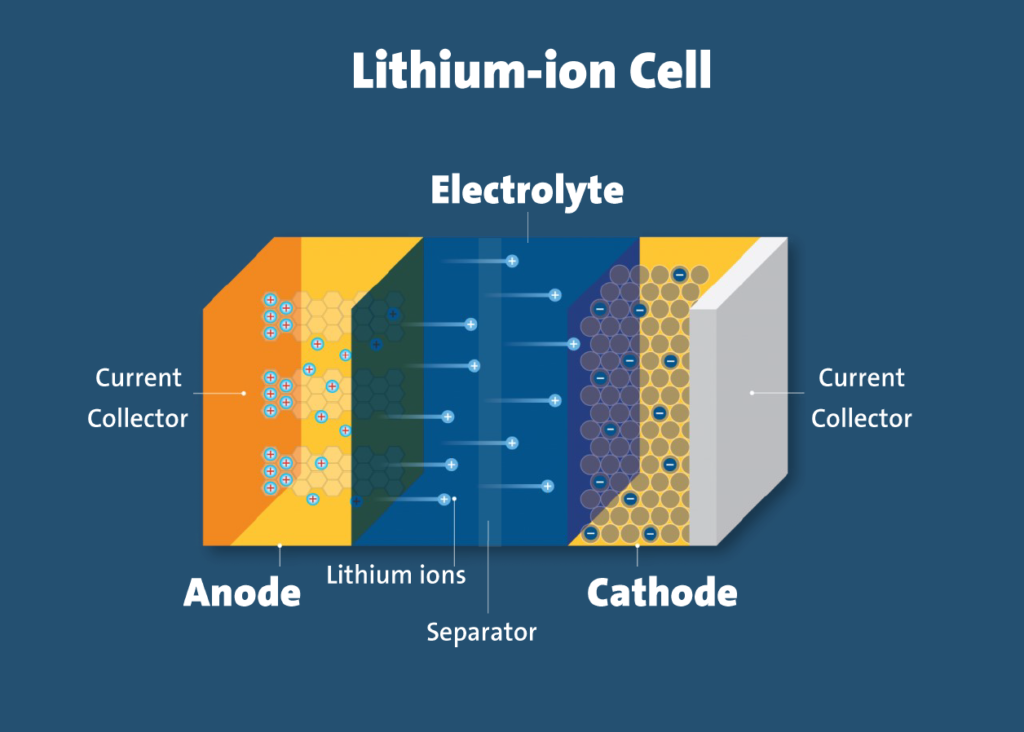
source: UL Research Institutes
Another issue with fast charging is something called lithium plating.
This happens when lithium metal starts to coat the anode’s surface instead of being absorbed properly. Lithium plating can reduce the battery’s capacity and even cause short circuits.
These are not only bad for the battery but could be a safety hazard.
The more often your battery is exposed to high heat and fast charging cycles, the quicker it ages. Over time, this means your battery will hold less charge and may need to be replaced sooner than if you’d mostly used slower charging.
So, while fast charging is great in a pinch, it’s important to use it wisely to help keep your battery healthy for the long haul.
Which EV Charger Type is Most Suitable?
Alternating current (AC) is the go-to for most electrical needs. It’s more efficient and can easily be adjusted for different voltage levels. Plus, it loses much less energy over long distances compared to direct current (DC).
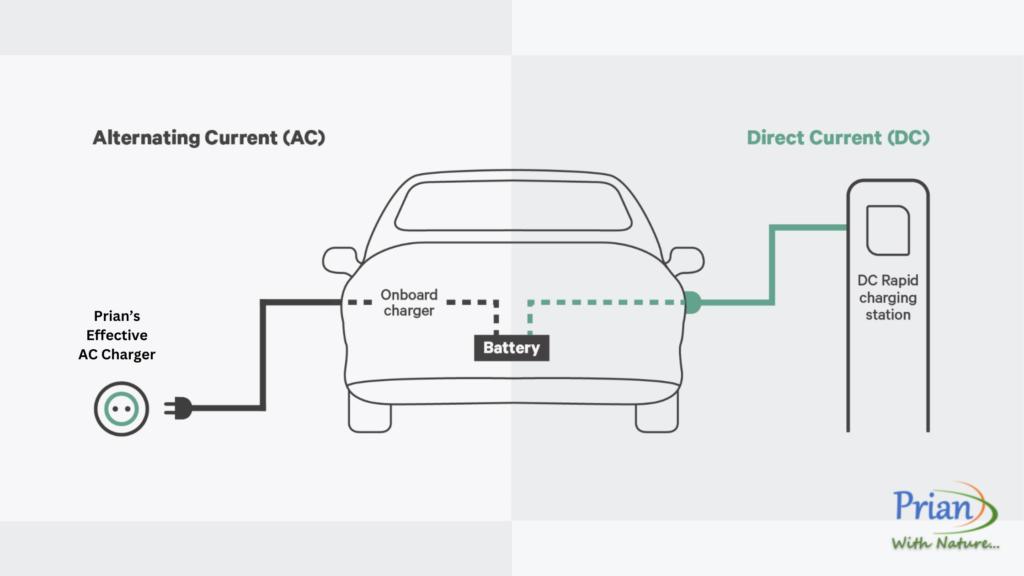
So if you’re one of those EV owners who bought an electric vehicle by actually being environment conscious, AC charging is for you.
And if you’re looking for reliable AC chargers that don’t harm your EV, check these home chargers to safely charge your EV.
Because of these benefits, AC tends to be cheaper than DC.
Related: AC vs DC Charging in Electric Vehicles
The cost to slow charge your EV at home depends on your local energy rates. But on average, residential electricity (AC) costs around sixteen cents per kilowatt hour (kWh).
On the other hand, DC fast chargers usually charge by the minute or per kWh. While they’re often more expensive than charging at home, they’re still much cheaper than filling up a gas tank.
Why Fast Chargers Stop Charging After 80%
It’s interesting to note that fast-charging stations take about the same time to charge an EV battery from 80 to 100 percent as they do to go from 10 to 80 percent.
This means that after hitting 80 percent, you might need to wait another half-hour to fully charge the battery.
But why does this happen?
Fast chargers automatically switch to a slower, alternating current mode once the battery hits 80 percent.
One reason for this is to conserve both time and energy. The longer charging time at this stage discourages drivers from waiting for a full charge, which helps the station save energy and reduces wait times for others needing to charge.
Another reason is to protect the battery’s health.
EVs use lithium-ion batteries, which perform best when kept at a mid-range charge. They aren’t designed to handle high voltages for extended periods. Slowing down the charge after 80 percent allows the ions in the battery to stabilize. This helps maintain the battery’s integrity and prolongs its lifespan.
Is Fast EV Charging Bad?
Not necessarily.
Fast charging is crucial for making electric vehicles viable for long-distance travel. There are safeguards in place to protect your battery.
For instance, fast charging stations typically limit charging to 80 percent. And most lithium-ion batteries are equipped with a Battery Management System (BMS). These systems track key aspects of battery health, such as voltage, temperature, and ion balance.
While many experts agree that slow charging is the best method for maintaining battery health, as it uses lower voltage and gives the ions more time to stabilize.
However, using fast chargers occasionally to finish a trip won’t significantly impact your battery’s overall condition.
Case Study: The Exceptional Case of Tesla EVs
There’s no denying the fact that Tesla is an exceptional electric vehicle company. And no doubt, the most popular.
In this section, we aim to explore how fast-charging has little to no effect in Tesla EVs.
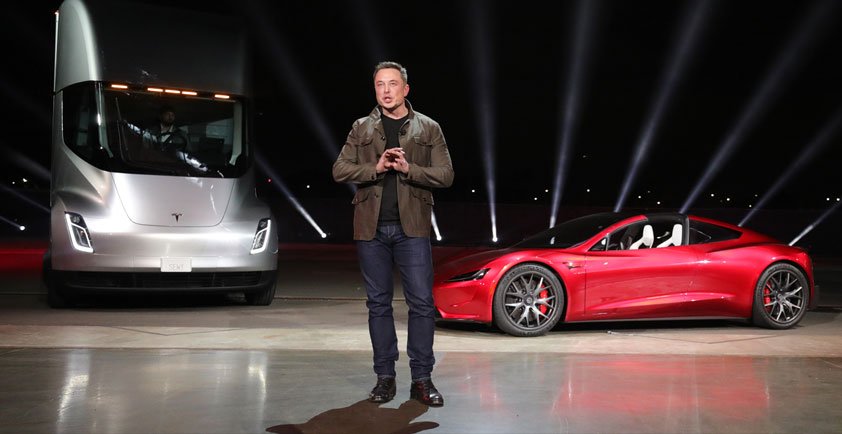
source: IoT Automotive News
A recent study by Recurrent Auto, which looked at charging data from over 12,500 Tesla vehicles in the U.S., found that the rate at which a battery’s range decreases is pretty much the same whether you use AC or DC charging.
The graphs from the study illustrate the remaining percentage of the original range displayed on the dashboards of Tesla Model 3 and Model Y over time.
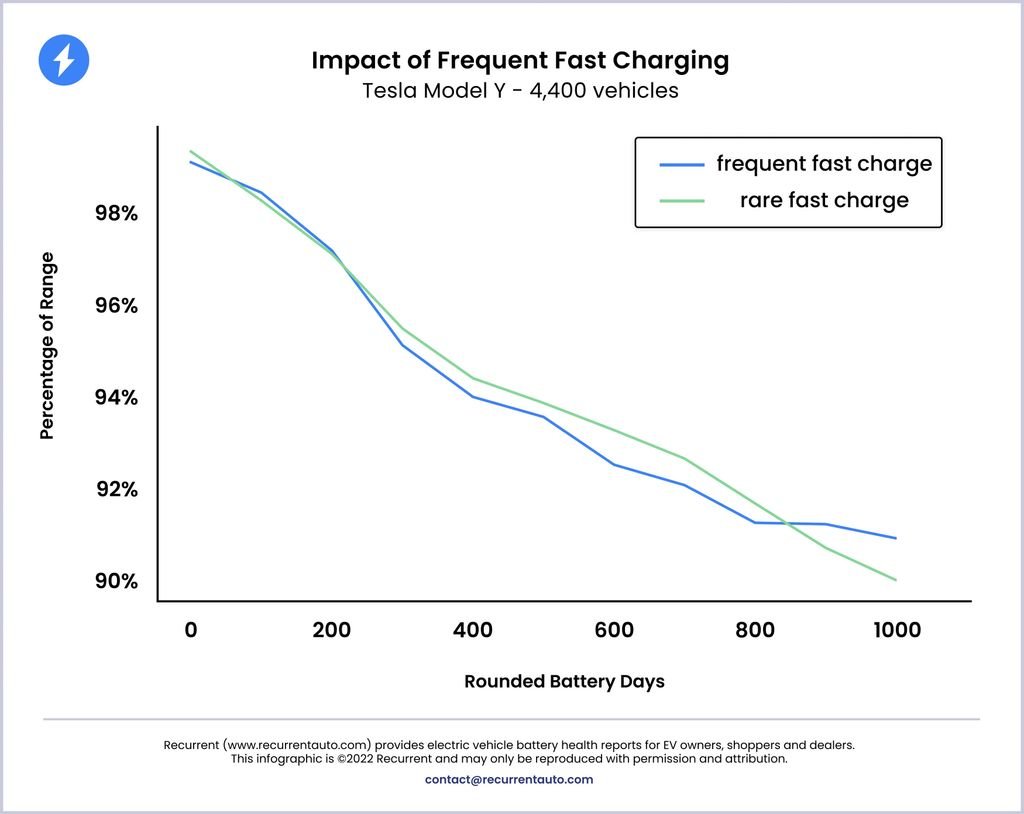
However, it’s not just whether you use DC or AC charging that can impact battery life.
Other factors, like extreme temperatures and keeping the battery too low or too full, also have a significant effect on the overall health of your EV’s battery.
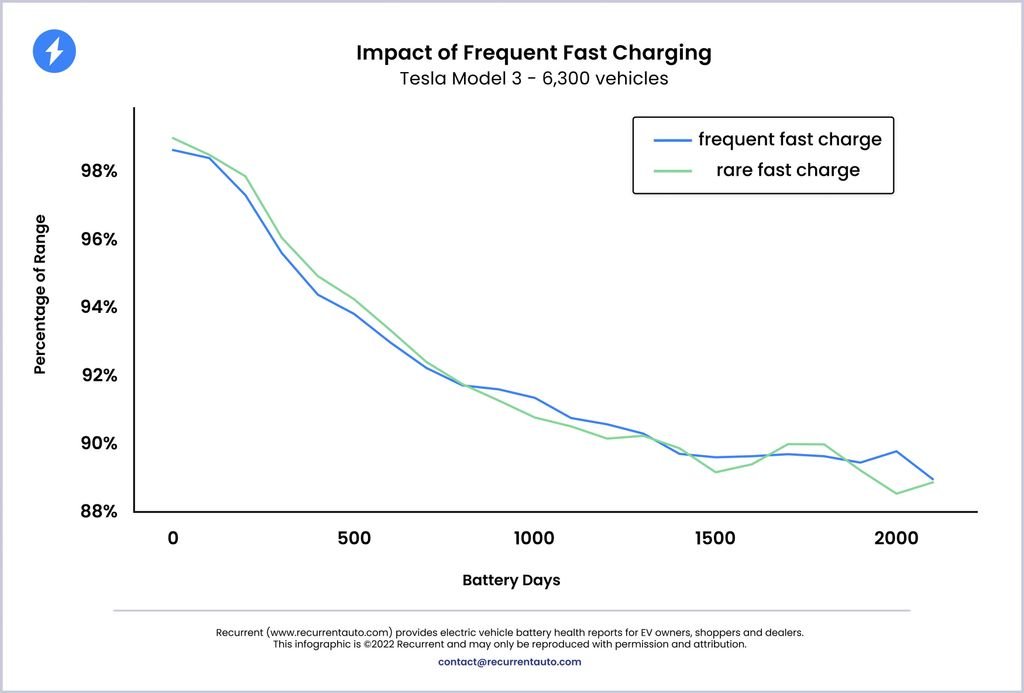
As these findings reveal, the advanced thermal, voltage, and battery management systems that EV manufacturers have developed are effective in protecting batteries from damage, even with regular use of fast chargers.
Tips on Extending Your Battery Life
To extend your battery’s life, it’s crucial to use the preconditioning feature, especially in extreme hot or cold weather. This feature warms or cools the battery to the ideal temperature before you start charging.
Another good practice is to avoid fast charging when your battery is either almost empty or nearly full. Charging at these levels can put extra stress on the battery due to higher resistance, which can wear it down more quickly.
These tips aren’t only useful for EV batteries, but any lithium-ion battery.
So which EV charging type is the best?
In the end, while fast charging can be a lifesaver when you’re in a hurry, it’s clear that slow, AC charging often emerges as the more balanced choice for everyday use.
It may take a bit longer, but it’s gentler on your battery and your wallet.
By opting for AC charging, you’re not only protecting your battery’s health and extending its lifespan, but you’re also embracing a more cost-effective solution.
Plus, with advancements in technology and smarter charging solutions, AC charging is more accessible and practical than ever.
Thanks to green energy startups like Prian Energy, you can get an affordable EV charging station installed at your home. Click here to book a demo with Prian Energy to know more.
So, for most EV owners looking to blend efficiency with longevity, AC charging is where it’s at. It’s a smart choice for the long haul, ensuring your electric ride stays reliable and ready for whatever comes next.


Leave a Reply